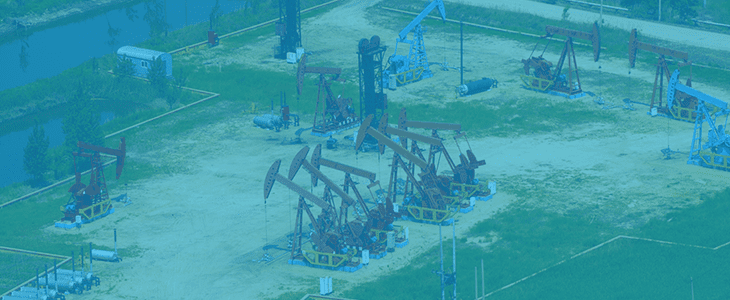
The price of oil has rarely left the headlines in recent months. Per Magnus Nysveen, from Rystad Energy published a piece in January “2015 will be extraordinarily tough for oil companies“. He makes the point that delaying development of new projects could put $150Bn at risk. With well publicized cuts in exploration, production and capital spending industry leaders outside of the Oil and Gas industry have had to reflect on the potential effect of the oil market on their own businesses. In January, United Rentals declared oil prices wouldn’t deter growth “saying that upstream oil and gas accounts for only about 6 percent of the company’s business” (see article here). Edward Sullivan, Portland Cement Association Chief Economist, declared last week that for 2015–2016, “there would be a negative impact on construction projects related to energy drilling and employee wages in energy industry states”, suggesting therefore an effect far broader than merely on the Energy sector itself at least for the next 12–18 months, though he sees a brighter future ahead.
All of this drew me back to re-read an article published by Tom Ortiz from Halliburton back in November last year discussing “Paradigm shifting in oil and gas” where he argued convincingly that it was time for the oil industry to look at “finally growing the business by exploitation of economies of scale, best practices, automation and total quality management…Unacceptable levels of capital intensity should be making the business case for operational excellent obvious to investors as well as managers”. Tom’s point is reiterated even more firmly in an article published on Rigzone quoting Rick Carr, principle and leader of Deloitte LLP’s oil and gas operations and supply chain as saying that “nobody has really cracked the nut of running a lean, efficient operation”. The articles goes on to discuss that how upstream oil and gas companies need to “drive innovation to improve drilling and well completion performance… companies will be looking to introduce new technologies, as well as restructuring operations internally…”.
So what does all this really mean for the rental companies and service businesses that manage equipment and tools for the oil and gas sector and those construction companies who are involved in any part of the upstream construction process? Surely there is a huge opportunity here for identifying ways to make your processes lean, mean and cement relationships now whilst the upstream industry is being forced to cut back on capital expenditure and projects. The upstream industry needs efficiency, it needs streamlined, effective equipment management processes. If you can deliver that then you have a competitive advantage that will breed success.
If the oil price remains low for an extended period, even if it still makes its way back to the $70-80/bbl mark the energy sector is going to be looking for ways to make the cost of extraction lower in the longer term. A couple of years ago I read a great case study on Aera Energy LLC’s lean principles approach to oilfield management. By using continuous improvement they managed to keep the cost per foot of drilling steady at $100 for a decade even as inflation and demands changed. The question is, can your oilfield services or equipment rental business deliver the kind of continuous improvement that keeps rates down and ultimately generates cost savings for your energy customers? Are your oilfield construction services as effective as they could be in controlling costs?
There is little doubt that improvements don’t come out of thin air. You need technology, software systems and people management that designed to streamline and to remove waste. There is little point in having a piece of equipment that is very good at doing its job, if your equipment logistics systems leave it sitting unused at a well site rather than maximizing its utilization. There is nothing efficient about having teams out doing a brilliant job in the field if you have to wait for timesheets to be entered on paper, filed manually and keyed back into systems centrally. If preventative maintenance can be managed more efficiently using telemetrics data to identify likely failures before they happen then systems can be kept up and running rather than generating delays that translate directly into significant costs.
Whilst oilfield companies revise capital spending downwards by anything from 30–50% depending on which source you read, now is the time to capitalize on the efficiencies you can deliver. If you don’t have the systems and technology in place to deliver those efficiencies then start implementing now, make sure when the capital budgets ease you are able to capitalize on the growth instantly. Don’t just stand back and wait for the market to change again. It may not. If it does change, you may find that your customer’s expectations, and more particularly their investor’s expectations, have shifted fundamentally.





